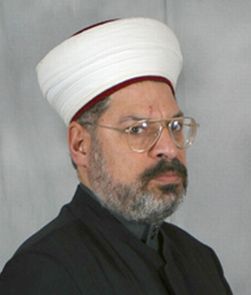 ਸਤਿਗੁਰਬਚਨਕਮਾਵਣੇਸਚਾਏਹੁਵੀਚਾਰੁ॥
ਸਤਿਗੁਰਬਚਨਕਮਾਵਣੇਸਚਾਏਹੁਵੀਚਾਰੁ॥

 ਸਤਿਗੁਰਬਚਨਕਮਾਵਣੇਸਚਾਏਹੁਵੀਚਾਰੁ॥
ਸਤਿਗੁਰਬਚਨਕਮਾਵਣੇਸਚਾਏਹੁਵੀਚਾਰੁ॥

|
Wearing Gurmukhi Dastaar without Keski showing December 02, 2011 07:37AM |
 Surmai Dastaar is the way to go.
Surmai Dastaar is the way to go. 

|
Re: Wearing Gurmukhi Dastaar without Keski showing December 02, 2011 07:45AM |
|
Re: Wearing Gurmukhi Dastaar without Keski showing December 02, 2011 07:52AM |
|
Re: Wearing Gurmukhi Dastaar without Keski showing December 02, 2011 10:40AM |
|
Re: Wearing Gurmukhi Dastaar without Keski showing December 02, 2011 11:09AM |
|
Re: Wearing Gurmukhi Dastaar without Keski showing December 02, 2011 11:50AM |
|
Re: Wearing Gurmukhi Dastaar without Keski showing December 02, 2011 11:53AM |
|
Re: Wearing Gurmukhi Dastaar without Keski showing December 02, 2011 02:23PM |
Quote
The picture below should prompt our brothers who don't show their Keski when wearing Gurmukhi Dastaar, to start showing the Keski underneath; otherwise their Dastaar would resemble Al-qaeda chief's Dastaar. I wonder why he has started wearing a Gurmukhi Dastaar kind of Dastaar now. Troublemakers!!! Another reason to avoid White Dastaar. Surmai Dastaar is the way to go.
|
Re: Wearing Gurmukhi Dastaar without Keski showing December 02, 2011 02:26PM |
Quote
In India whenever white dastaar was worn by a Sikh he was labelled as Congressia or follower of Congress party in India. After what the congress did, who would want to get labelled like that in any case by wearing the white dastaar.
|
Re: Wearing Gurmukhi Dastaar without Keski showing December 02, 2011 03:55PM |
Quote
Kulbir Singh
And good point, Amritvela jee. Keep the ears tucked in.
 . (see below)
. (see below)



|
Re: Wearing Gurmukhi Dastaar without Keski showing December 02, 2011 04:03PM |
 . (see below)
. (see below)
|
Re: Wearing Gurmukhi Dastaar without Keski showing December 02, 2011 04:49PM |
|
Re: Wearing Gurmukhi Dastaar without Keski showing December 02, 2011 05:35PM |
Quote
If we are trying to avoid being associated with AL Quaida the color of our dastar does not matter. As long as the color of naam is not inside
us what good will outer colors do to enlighten the general public. THe dastar you posted above is no different then the style Baba Isher
SIngh Ji ( Rara Sahib) use to wear. When people ( including non gursikhs) would have darshan of Baba Ji they would get struck by arrows of love due to Baba Jis Naam kamaee. Similarly Bhai Sahib Bhai Randhir SIngh Ji mentions when meeting naam imbued GUrmukhs the arrows of naam.
|
Re: Wearing Gurmukhi Dastaar without Keski showing December 02, 2011 06:04PM |
|
Re: Wearing Gurmukhi Dastaar without Keski showing December 02, 2011 06:36PM |
|
Re: Wearing Gurmukhi Dastaar without Keski showing December 02, 2011 06:57PM |
|
Re: Wearing Gurmukhi Dastaar without Keski showing December 03, 2011 09:35AM |
|
Re: Wearing Gurmukhi Dastaar without Keski showing December 03, 2011 10:06AM |



|
Re: Wearing Gurmukhi Dastaar without Keski showing December 03, 2011 12:12PM |
|
Re: Wearing Gurmukhi Dastaar without Keski showing December 03, 2011 06:10PM |
|
Re: Wearing Gurmukhi Dastaar without Keski showing December 03, 2011 11:39PM |
|
Re: Wearing Gurmukhi Dastaar without Keski showing December 05, 2011 03:29PM |